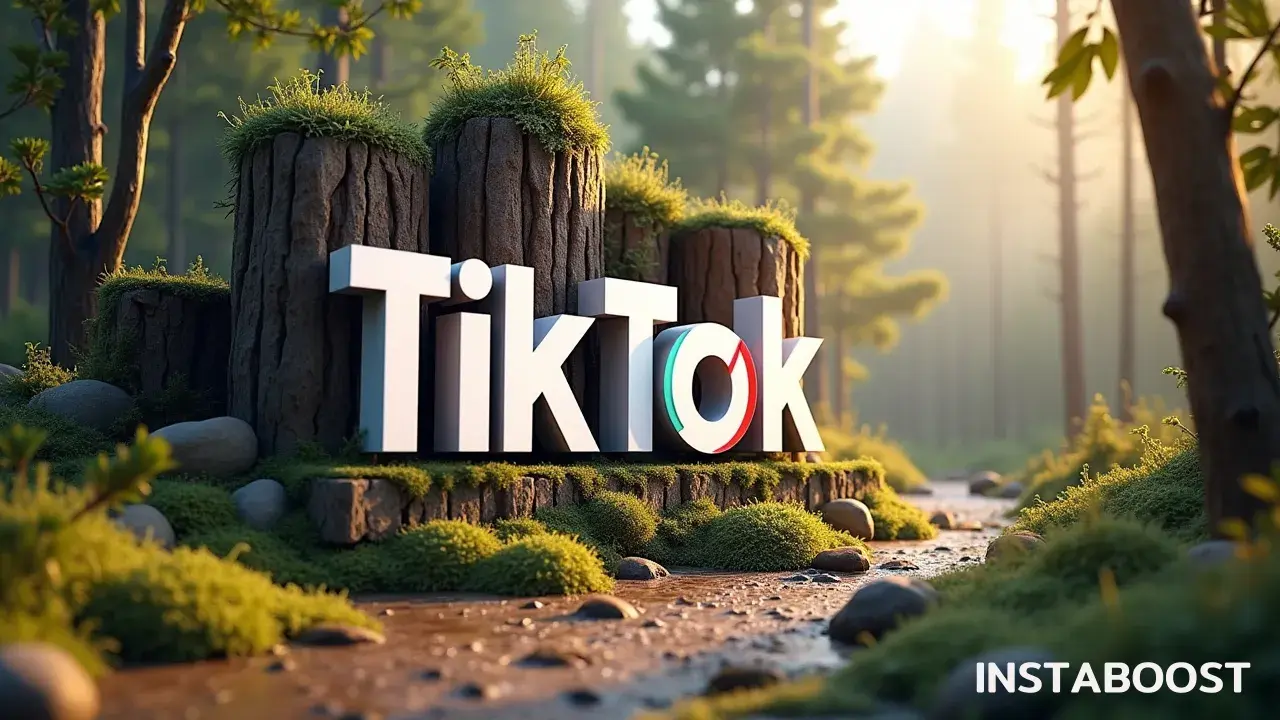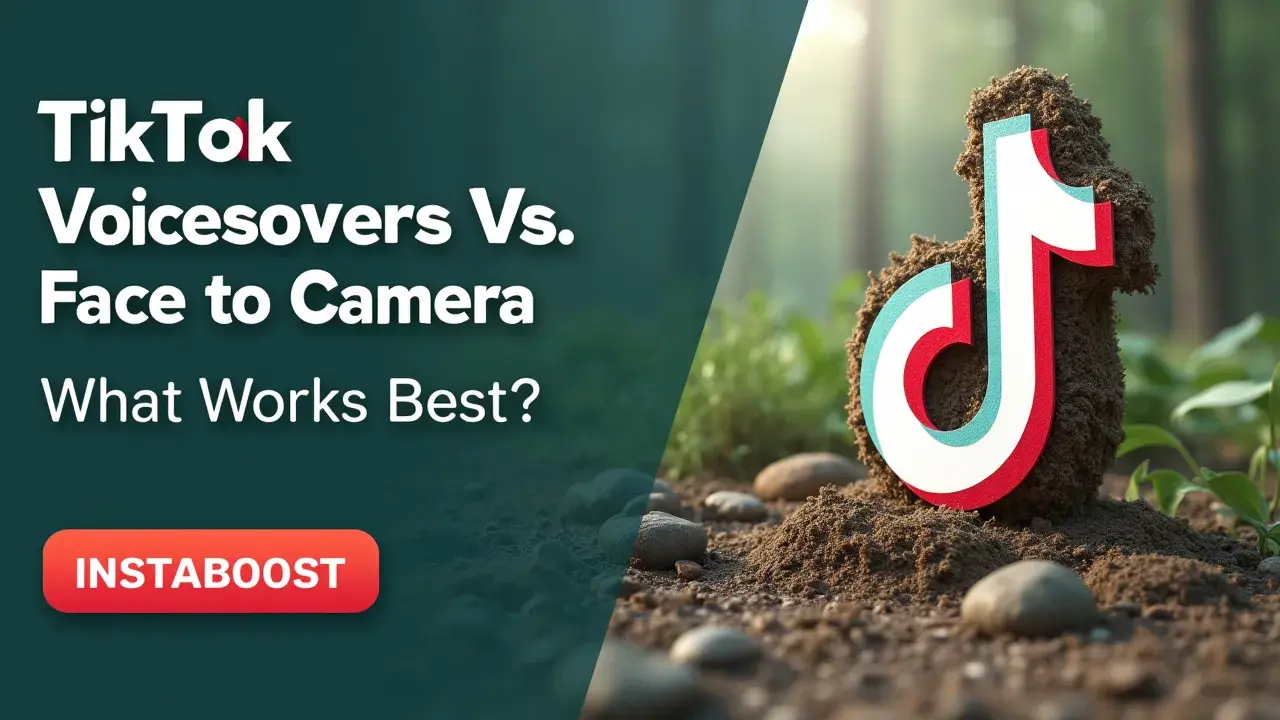TikTok Voiceovers vs. Face-to-Camera – What Works Best?
Both formats can perform well, with effectiveness shaped by content and audience expectations. Voiceovers streamline storytelling and pacing, while face-to-camera builds immediacy and personal connection. Performance hinges on how clearly the message lands, how well the tone matches the topic, and how consistently the style is executed. Testing both approaches and aligning format to the goal and audience can reveal a reliable path to stronger engagement.
Voiceovers vs. Face-to-Camera: The Hidden Levers Shaping TikTok Success
Short-form video is really shaping how people use social media now, and the decision to speak straight to the camera or to narrate over clips can actually change how your video feels to others. You’ll find people on either side – some are convinced that looking into the lens and showing your face helps others feel like they know you, while some are sure that a clear voiceover with well-chosen visuals can keep folks watching longer. It’s not all about comfort or personality, either.
These choices affect whether a video seems open, whether it feels too polished, or whether it comes off as something you can trust.
These choices affect whether a video seems open, whether it feels too polished, or whether it comes off as something you can trust.
The TikTok algorithm quietly pays attention to things like whether people stick around to the end or watch again, so figuring out which approach works isn’t only a theoretical thing. Especially with sponsored TikToks, there’s that question of whether being on camera makes an ad feel more like a personal recommendation, or if a voiceover helps it blend into the endless scroll – some people even look up little tricks to get TikTok video boost just to test what works.
If you want your videos to spread or to actually connect with people, it helps to think about what each method does and what it might take away. So before you hit record, it’s worth stopping for a second and thinking about how you want to tell this particular story, and what you’re hoping to get out of it.
If you want your videos to spread or to actually connect with people, it helps to think about what each method does and what it might take away. So before you hit record, it’s worth stopping for a second and thinking about how you want to tell this particular story, and what you’re hoping to get out of it.

Why Credibility Hinges on How You Show Up
I didn’t add extra steps – I removed the ones that weren’t doing anything. The main thing that makes people trust you on TikTok isn’t whether they’re seeing your face or hearing your voice; it’s whether you’re coming across as real. A lot of creators focus on how they’re presenting, but viewers can usually tell when someone’s going through the motions, whether that’s a carefully rehearsed selfie video or a voiceover that sounds like it could be from anyone.
Sometimes it helps to show your face – like if the reaction matters, or if your expressions make the story clearer. Other times, especially with product demos or quick tutorials, it makes more sense to focus on the visuals and talk over them. People on TikTok pick up on when something’s an ad almost immediately. Looking at what actually gets shared – there are INSTABOOST case studies and social analytics about this – it’s usually the videos that don’t feel like they’re selling anything, or where the branded part is woven in so it just feels like regular advice from someone you know. That’s the thread that runs through both styles. The format matters less than whether you’re being straightforward. If you’re stuck deciding between talking to the camera and doing a voiceover, it can help to think about which version you’d actually pause to watch if it popped up in your own feed, especially if you’re hoping to gain TikTok traction.
Scaling Smart: Building Repeatable TikTok Content
If your process only works on good days, it’ll probably fall apart when things get busy or you’re not feeling your best. So when you’re choosing between doing TikTok voiceovers or recording yourself on camera, it usually comes down to what you can keep up with for a long stretch – not what seems exciting or low-effort in the moment. The hardest part about making videos that people actually see isn’t having a clever idea; it’s building a routine you won’t burn out on after a few weeks. Face-to-camera videos can feel more direct and help people recognize you, but if every post depends on you feeling “on,” or if you need perfect lighting and a quiet house, it gets tiring fast.
Voiceover videos give you a bit more breathing room – since you can make several at once, use old clips, and focus on what you’re saying instead of always having to set everything up from scratch. And if one of your videos gets a lot of attention, having a format that’s easy to repeat makes a difference. I’ve noticed brands like INSTABOOST mix narration and visuals so they can post regularly without scrambling every time; sometimes it’s just about having a familiar workflow, or thinking back to how you first managed to gain attention with TikTok likes before routines kicked in. Whether you’re comfortable showing your face or prefer to stay off camera, it helps to figure out which type of video fits into your week without too much stress.
Most people who’ve been at this for a while end up working backwards – they experiment, notice what feels most manageable, and build from there, making sure they’re still connecting with viewers in a way that feels real. It’s not really about chasing trends or viral moments. It’s about having something steady enough to come back to, even on days when the algorithm isn’t on your side.
The Myth of “Working Harder” on TikTok
It’s easy to think that getting ahead on TikTok is mostly about putting in more hours or pushing yourself to do more. There’s a lot of advice out there about always showing your face, responding to every comment, and spending extra time on edits. But after watching what actually takes off – like some of those voiceover videos or straightforward clips – it’s clear that effort alone isn’t what makes something work.
Sometimes it’s figuring out when your current style is wearing thin, or when holding onto a certain type of video is slowing you down. For example, you might realize that spending hours on face-to-camera takes isn’t helping, or that the pressure to polish every detail isn’t actually changing how people watch. The algorithm is paying attention to whether viewers stick around at the start, not how long you spent tweaking a transition. I’ve seen simple voiceovers on everyday footage do better than highly produced pieces, not because the creator is cutting corners, but because they’ve recognized when to step back a little and just let the idea come through.
Shifting your approach doesn’t mean you’re giving up; it’s more about noticing what actually connects. A lot of us keep showing our faces on camera because it’s supposed to build trust, but that isn’t always what matters most for the people watching. The difference often comes down to noticing when something isn’t working, and being willing to try something else even if it feels a bit uncertain. Whether you’re growing on your own or working with a service like INSTABOOST, or just curious about engagement starter with TikTok views, it seems like the creators who do well are the ones who can quietly set aside what isn’t working – even before they’re completely burned out.
Trusting Your Signal: The Final Test for TikTok Formats
If something in your gut is nudging you, it’s probably worth listening. By now, after all the times you’ve tried different things on TikTok – recording voiceovers, speaking straight to the camera – you likely have a sense of what actually feels right for you. Those small hunches you get while working, like noticing you’re less drained after a voiceover or realizing it’s easier to keep going with direct-to-camera clips, are worth paying attention to. For some people, recording a voiceover makes things feel less pressured; it’s easier to organize thoughts and keep the process manageable.
Others find that facing the camera helps them speak more naturally, even if it feels a bit awkward at first. There isn’t a single way to do this, and that’s probably for the best. The algorithm seems to reward people who show up often and connect with others in a way that feels genuine, not necessarily people with the fanciest edits or the most polished delivery. Sometimes it surprises you how just staying consistent – whether you’re aiming to improve your reach or hoping your videos get seen by more people – ends up mattering more than anything else.
So if you’re hung up on whether sponsors want a certain style, or if prerecorded audio or off-the-cuff recordings will go further, try asking yourself which approach you’re more likely to stick with when things get busy or you’re tired. The people who end up quietly making something sustainable out of this are usually the ones who pick a pace and a routine that fits into their real life, not the ones chasing what looks best from the outside. Whatever tools you’re using – whether it’s something like INSTABOOST or just your phone propped up on a stack of books – the kind of effort you can keep coming back to ends up mattering most.















